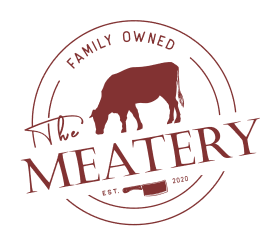First off, is A5 or A4 Wagyu Better?
When comparing A5 and A4 wagyu, it's essential to understand that both represent exceptional quality beef, but there are notable differences. A5 wagyu is considered the highest grade, featuring more intense marbling and a higher fat-to-meat ratio than A4. The Japanese grading system Japanese grading system evaluates beef on multiple factors, including marbling, color, firmness, and fat quality.
A5 wagyu typically scores between 8-12 on the Beef Marbling Standard (BMS), while A4 ranges from 6-8. This increased marbling in A5 creates an extraordinarily tender eating experience with a more pronounced buttery texture. However, some connoisseurs actually prefer A4 wagyu because:
- It offers a more balanced meat-to-fat ratio
- The flavor can be less overwhelming for those new to wagyu
- It's generally more affordable while still providing an exceptional dining experience
The choice between A5 and A4 often comes down to personal preference. While A5 wagyu represents the pinnacle of marbling and luxury, A4 provides an excellent alternative that many find more approachable for regular consumption.
Richness And Fattiness Of A5 Wagyu
A5 wagyu is renowned for its extraordinary richness and distinctive fatty content. The intense marbling creates a unique eating experience that literally melts in your mouth at body temperature. This characteristic is due to the beef's unique fat composition, which contains a higher percentage of monounsaturated fats monounsaturated fats compared to regular beef.
The perceived richness of A5 wagyu can be both a blessing and a challenge for diners. Many experts recommend smaller portion sizes (around 3-4 ounces) because:
- The intense richness can be overwhelming in larger portions
- The fat content creates a highly satiating effect
- The complex flavor profile is best appreciated in measured amounts
The fattiness of A5 wagyu contributes to its signature "umami" flavor profile, creating a buttery, almost sweet taste that distinguishes it from other premium beef varieties. This unique characteristic makes it a prized ingredient in high-end restaurants worldwide.
Wagyu Vs Other Beef
The differences between wagyu and conventional beef varieties are substantial and extend beyond mere marbling. A5 wagyu, in particular, stands apart due to several distinctive characteristics:
- Marbling pattern: Wagyu features more evenly distributed and finer marbling
- Fat composition: Higher percentages of healthy omega-3 and omega-6 fatty acids omega-3 and omega-6 fatty acids
- Texture: Significantly more tender than conventional beef
- Price point: Considerably more expensive due to strict breeding and raising practices
While premium grades of conventional beef like USDA Prime offer excellent quality, they typically can't match the unique characteristics of wagyu. The genetic predisposition of wagyu cattle to produce this type of marbling, combined with traditional Japanese raising methods, creates a product that's fundamentally different from other beef varieties.
What is the Highest Grade of Beef in the World?
A5 wagyu represents the highest possible grade of beef in the world, particularly when sourced from Japan's most prestigious regions. The grading system considers multiple factors:
- Yield grade (A-C)
- Quality grade (1-5)
- Marbling score (1-12)
- Meat color and brightness
- Fat color and quality
Within the A5 classification, specific regional varieties like Kobe, Matsusaka, and Ohmi beef are considered the ultimate expression of beef quality. These prestigious designations must meet additional criteria beyond the standard A5 grading requirements.
Is Wagyu Beef Healthy?
While A5 wagyu is high in fat content, it offers several surprising health benefits compared to conventional beef:
- Higher concentrations of beneficial omega-3 and omega-6 fatty acids omega-3 and omega-6 fatty acids
- More monounsaturated fats monounsaturated fats compared to saturated fats
- Higher levels of conjugated linoleic acid (CLA)
- Rich in essential minerals and vitamins
However, it's important to note that A5 wagyu should be consumed in moderation due to its high caloric content. The health benefits are best realized when wagyu is part of a balanced diet and eaten in appropriate portions. Many nutritionists recommend treating A5 wagyu as a special occasion food rather than a dietary staple.









